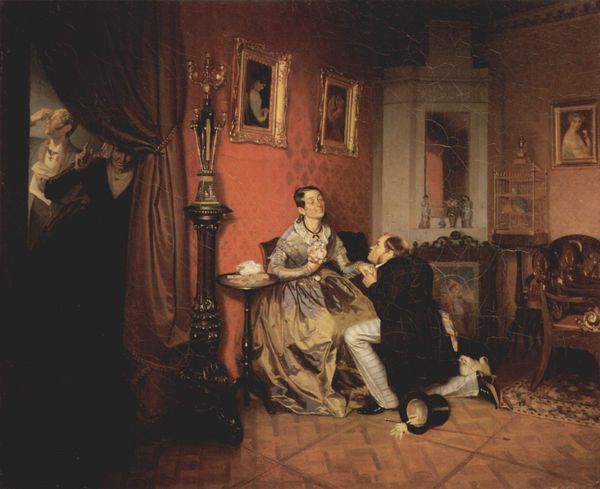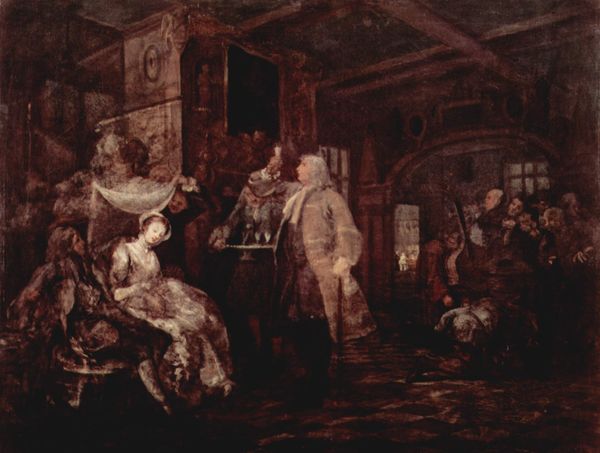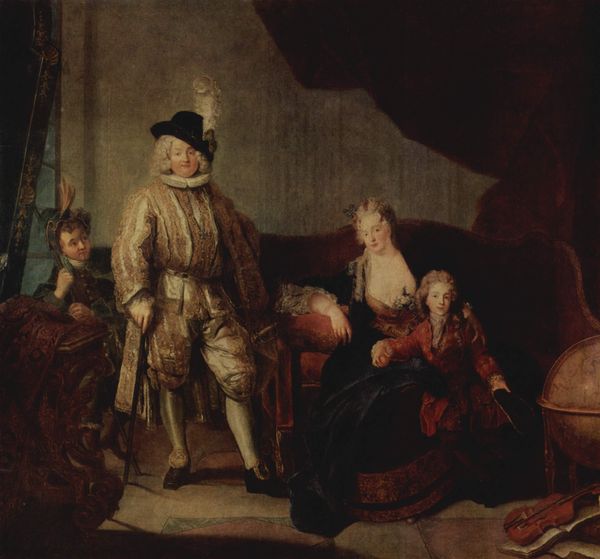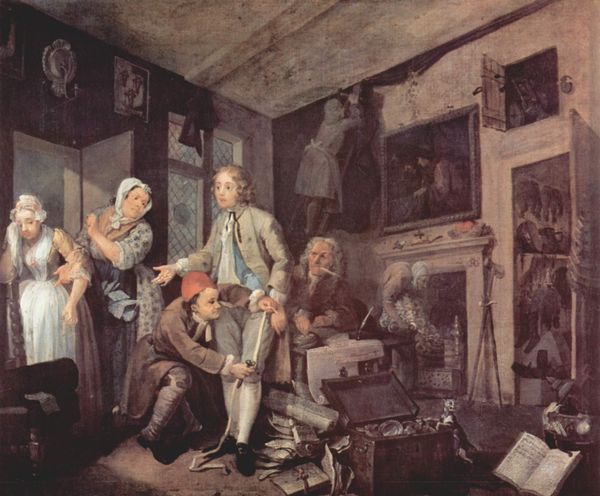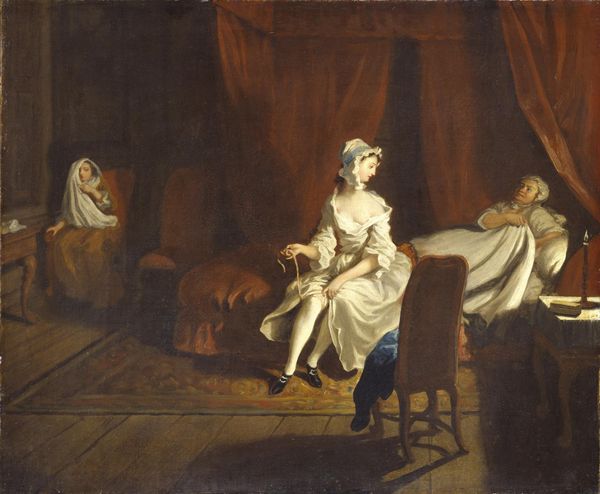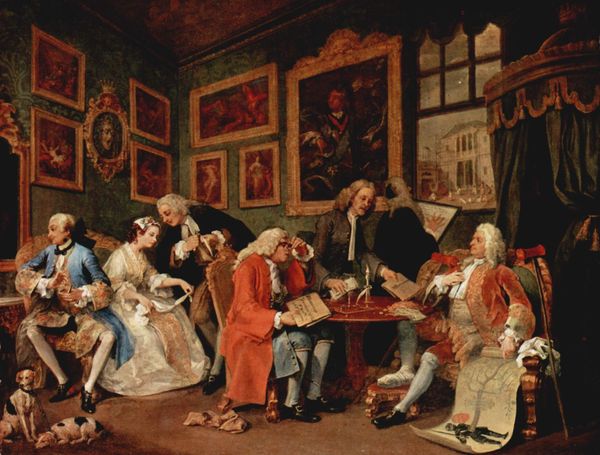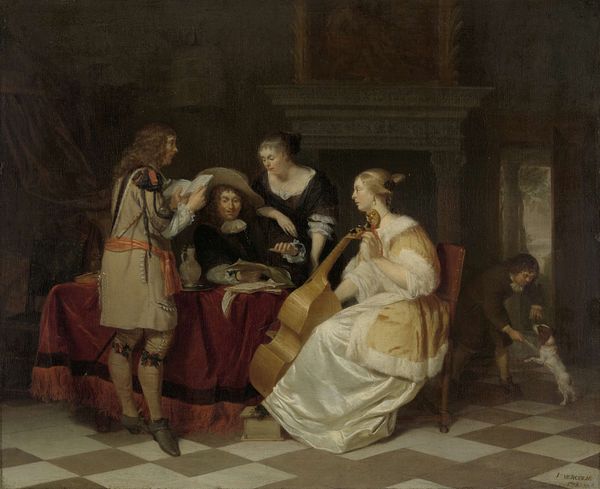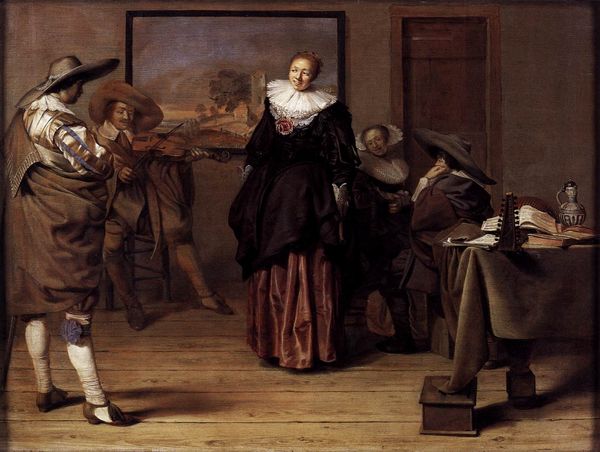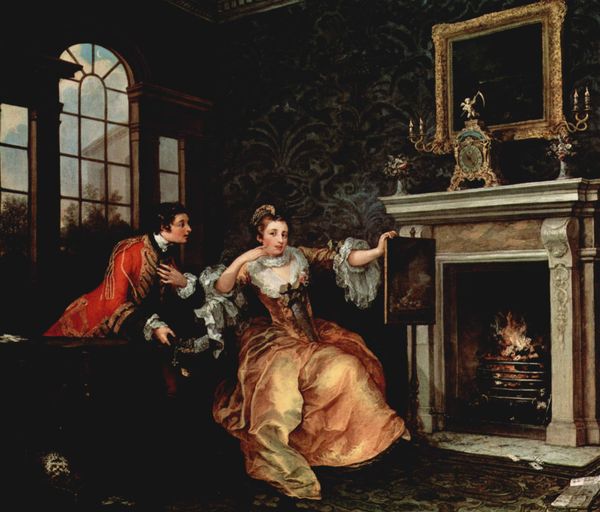
painting, oil-paint
#
portrait
#
allegories
#
narrative-art
#
baroque
#
painting
#
oil-paint
#
historical fashion
#
genre-painting
#
history-painting
Dimensions: 68.5 x 89 cm
Copyright: Public domain
Curator: Ah, here we have "The Murder of the Count," an oil painting by William Hogarth, completed around 1745, part of a series currently residing at the National Gallery in London. Quite a scene, isn’t it? Editor: It’s a blood bath! Seriously though, the immediate impression is one of sheer chaos and desperation, underscored by that stark, almost theatrical lighting. It’s melodramatic, almost operatic, wouldn't you say? Curator: Very much so. Hogarth used narrative painting to satirize social ills and moral decay in 18th-century England, creating cautionary tales for public consumption. "The Murder of the Count," is one such story, reflecting anxieties around arranged marriages for social and financial gain. Editor: Right, I see it. That poor woman, kneeling, pleading--such vulnerability and that man climbing back through the window! What does that say, besides needing to find a better exit strategy, next time, maybe use the front door?! Curator: Precisely. He underscores the conspiratorial, secretive nature of the event, implying deception and social corruption, the breakdown of traditional family structures. It all adds to the moral commentary. Editor: The candelabra light casts sinister shadows across the scene and heightens the sense of horror, as does that deathly pallor of the count. Though maybe that's also the terrible wig. And a skull or two on the floor! That’s subtle! Curator: (Chuckles) Indeed. And consider the implications of placing that terrified woman in such proximity to that abandoned harpsichord—broken vows. The instrument also symbolizes status. This artwork really spoke to social anxieties in the 1700s. Editor: It's an extremely compelling, very disturbing look into that world, even now. Curator: It still begs the question, though: how do social changes lead to more social change in England and beyond? Hogarth's influence can be seen to this day! Editor: A vivid story, perhaps excessively so, reminding us that the old stories can be retold.
Comments
No comments
Be the first to comment and join the conversation on the ultimate creative platform.
